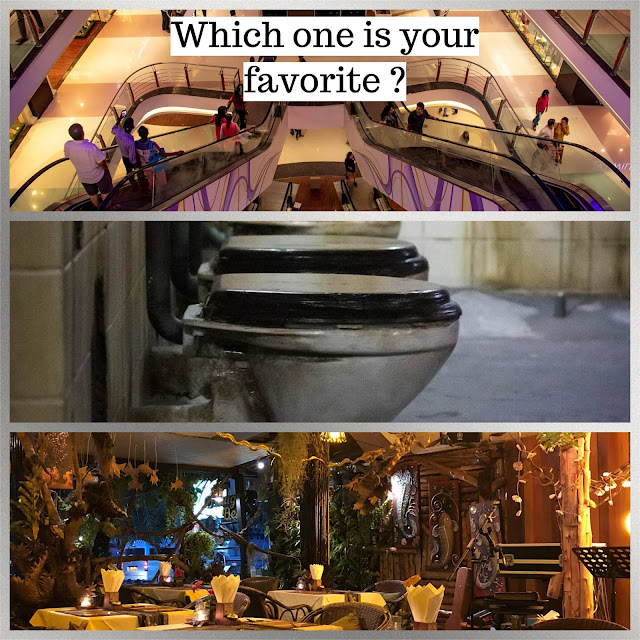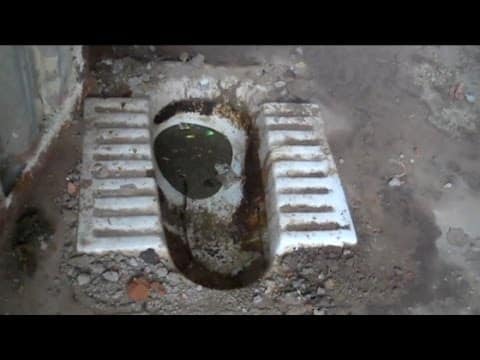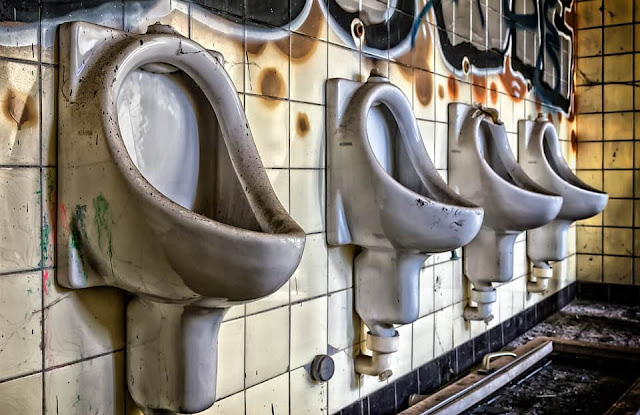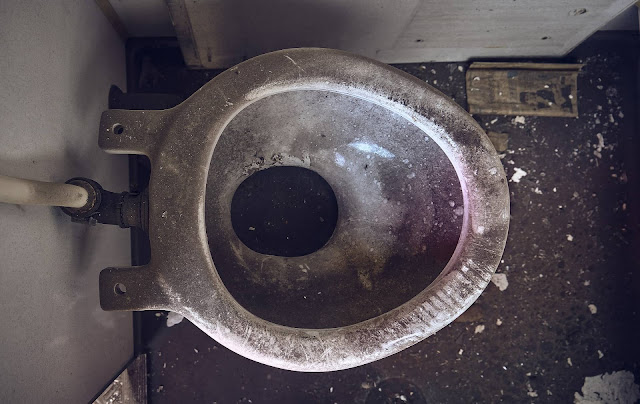Public Toilet Situation in Kathmandu (Nepal): Malls or Restaurants? Which One Is Your Favorite Place to Excrete and Defecate?
Public Toilet Situation in Kathmandu (Nepal): Malls or Restaurants? Which One Is Your Favorite Place to Excrete and Defecate?
There is a huge shortage of well-functioning public lavatories in Nepal and Kathmandu valley is the epitome to discuss this issue. Kathmandu valley has just 65 public toilets for millions of people and only 30 of them are usable which are also in miserable sanitary conditions. The public toilets that are rented to the private sector are only beneficial for the government and the person handling them but not for the general public who pay for the service and use them.
People who have developed a habit of consuming water regularly throughout the day should stop doing so if they are living in Kathmandu valley. It is a well-known fact that drinking an adequate amount of water is good for your health but you have to think many times (thinking twice is not enough) before drinking any amount of water if you are planning to head out around Kathmandu. Drinking water might be good for your health but if you are living in any major city in Nepal, it is not good for your bladder. You need to have a great holding power to avoid the worst situation which almost all of us face one time or another.
Holding power: The power to hold your pee for as long as it is required (Mostly in Nepal's context)
So, how's the public toilet situation in Kathmandu?
Twenty designs of public toilets were finalized and the huge announcement about the construction of lavatories around heritage sites and public spots was made in 2019 [1] but how many of them have been built? Zero. There are no concrete plans, policies, actions, and guidelines to solve this problem. Kathmandu Metropolitan City (KMC) announced to investigate and planned to build smart public toilets from the next fiscal year (this was announced in 2019 - [2]. One can only hope that this time the plan and action will become reality much sooner than Melamchi.
There is a huge shortage of well-functioning public lavatories in Nepal and Kathmandu valley is the epitome to discuss this issue. Kathmandu valley has just 65 public toilets for millions of people and only 30 of them are usable which are also in miserable sanitary conditions [3]. The public toilets that are rented to the private sector are only beneficial for the government and the person handling them but not for the general public who pay for the service and use them.
30 public toilets serve a population of 5 million. #Incredile
Recent Personal Story
I had to visit an embassy consular to receive documents that were submitted for verification. I left early because I had to reach the embassy before 9:30 am as it is only open for 2 hours ( 9:30 - 11:30 ). I reached the embassy around 9 am and then came nature's call. I was/am not familiar with this particular area so I had no idea where I could urinate.
After inquiring several people (guards, policemen, the general public, etc.) for a toilet, I became certain that there was no public toilet in that area. I was half an hour early for the embassy guards to let me inside the embassy and one of the guards told me that it could cost him his job if he let a stranger use their washroom. I didn't want my pee to be the reason for anyone to lose their job. I was rushing around the Naghpokhari area and probing people for the public toilet but it was all in vain. I even tried finding a public toilet on google map but it was futile too. Then, the urgency reached its' peak.
I prefer to hold my pee for an hour or two longer rather than using a dirty toilet. ( By dirty, I mean - the toilets that smell like shit, has shit everywhere and you end up puking at the end if you decide to use it )
A usual idea (Ninja Technique) that I have been practicing for many years, came back to my mind i.e. enter a restaurant, order something, and pee. I saw Marriot on my way but felt uncomfortable to enter and thought it would be too expensive just to urinate. I started to scan sign boards vigorously to find a decent restaurant. After some more wandering, I found the restaurant "Canteen". (This discovery could have been made earlier if I had gone the other way around in the first place)
I entered the restaurant with a plan and greater urgency than before but I didn't feel comfortable asking the big question i.e." Where's the toilet ? " as my first question. So I started with small talk like " What do you have for lunch ?" Honestly, I was not hungry at that time.
Luckily, it was early for them to serve lunch and the guy at the counter told me that the lunch items or any other food will only be ready after an hour or so. I showed my disappointment with a sad reaction and told them that I'll be back for lunch in an hour or so after completing my work. He seemed happy with my response and it is after all this, I delivered the big question that I had been dying to ask - "Where's the washroom ?"
As he pointed towards the urinal, I rushed (from the inside and suddenly the urgency was uncontrollable) but I kept my cool. Finally, I was at ease and relived myself after answering nature's call.
P.S. I returned to the very same restaurant for lunch that day.
I believe many of us feel awkward entering a restaurant to pee. We normalize that it's not normal to ask "Where is the toilet ? " as the first question when we enter any restaurant. But the more I think about it now, the more I feel that it should be normal and people (including myself) should feel comfortable to ask for the toilet before ordering or not ordering anything at all. Is it only me who doesn’t feel comfortable asking the big question at restaurants without ordering any food?
Issue
This is one of my recent stories and I have many more incidents like this where my savior was the restaurant or mall. This issue seems common and even laughable for a minute but if you think it's a very serious matter.
That's why the issue that I want to raise today is the condition of the public toilets in Nepal. Clean and accessible public toilets are still luxury in Kathmandu which can be enjoyed by very few. It is very difficult for a person to find a clean and well-maintained public toilet in Kathmandu valley especially if he/she is unfamiliar with the location. It is impossible to imagine how hard it is for people who have the disorders like Fecal incontinence, Urinary incontinence, Irritable Bowel Syndrome, etc.
- Irritable Bowel Disorder: Disorder that affects the large intestines that cause bloating, gas, and diarrhea
- Fecal Incontinence: Inability to control bowel movements
- Urinary Incontinence: Lose the power to control bladder
Possible solutions to ease this issue of public toilets?
It's easy to point a finger towards the government but sometimes we have to ask ourselves "Are we doing enough/anything from our side? " People throw toilet papers and tissue papers around the floor but not inside the dustbin, leave toilets unflushed after use, wet seats, sanitary pads that are thrown recklessly, etc. are commonly seen in our society [4]. So, a small change in our attitude and mindset can have a huge positive impact.
Melamchi might help to ease the water scarcity problem to some extent. This should aid in keeping lavatories clean and hygienic. Strict monitoring and time-to-time evaluation by the concerned personnel are vital in maintaining the standards. Incorporating the location of public toilets in google maps will make it more accessible.
Further, the lavatories in government buildings and hospitals should be made public (at least the ones that are outside of the main building.) All Nepalese have a suspicion of double standards by government officials. The accusation is that there are two types of toilets in government offices: the first one, which is clean and only used by the government officials and is restricted to the general public, and the second one, which is open for public and cleaned rarely and is in an unusable state. This bigotry by government officials needs to stop because if they think that they can't use the dirty/unhygienic toilets, how can they expect the general public to use them?
Also, disabled-friendly lavatories are non-existent in Nepal and there is no immediate plan to build one either. All of us have heard about the declaration " Open Defecation Free Country " but let's be honest, we all have seen people peeing in the bushes or on the wall inside Kathmandu valley. Before judging them, think about a question: " Will they do it in open if there was a public toilet nearby? " The very quick answer is: No, they won't. So, the real problem is that there are not enough public toilets for this population and only declaring “Open Defecation” won't solve the problem but building new and maintaining the old toilets will. We can learn from Bhutan, and Bangladesh and adapt the measures in a way that suits our country [5].
It won't affect much if we use gravel roads for a year but delaying in construction of public toilets might trigger a health crisis. The importance of hygiene can't be stressed enough in this COVID-19 era.
Finally, the one-line solution is - Build public toilets. Mobile toilets are temporary solution but maintaining and repairing them has been a huge challenge in Nepal. If Nepal is to follow the WHO standard, there should be 1 toilet for 50 people at every 500m distance. Even the most optimistic person can't see this happening but what we can do is, build at least one clean and hygienic public toilet with a water and soap facility at a 1 km distance. This seems doable and government should act swiftly to avoid potential health crises.
Malls or Restaurants? Malls! What's yours?
My favorite place to urinate has been Malls for many years because most of them have clean urinals and most of them are free of cost. Malls are different; there is no one to greet you and nobody is staring at you as you enter the building so you can do your work and leave without coming in contact with anyone. Honestly, I have visited malls almost all the time just to pee rather than to shop and I hope I'm not the only one. :)
My Top 5 Malls to Pee ( Over the years )
- Civil Mall ( Free)
- Labim Mall (Free)
- Kathmandu Mall ( Not free)
- People's Plaza (Not free)
- City Center ( Free)
Which one is your favorite: Malls or Restaurants? How was/is your experience using the public toilets? What's your story? Have you ever been in this type of situation or how many times have you been in this situation? What measures (ninja techniques) have you been using? Do you have any other suggestions for the long-term solution to this problem?
Related Articles: Why lifting lockdown without enough tests might backfire ?, Why online education is not the future ? , Corruption in Nepal: Effects, Causes and Remedies, Agriculture Supply Chain (Nepal), MCC, Impact of COVID-19 on Sports (Football) Industry., Lockdown Stories, Challenges of Nepal Government in Corona Era and Impact of COVID-19 on Supply Chain.
Thank you for your visit. I hope everything was clear, if not please do not hesitate to contact me for suggestions or queries regarding this topic. Honest feedback is highly appreciated. You can contact me via “ashishworks2020@gmail.com “. Thanks again.









No comments: